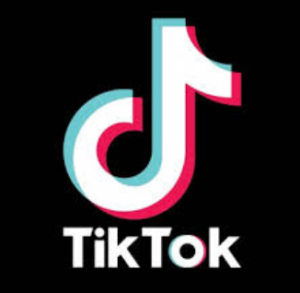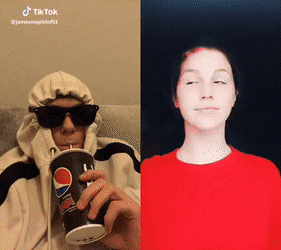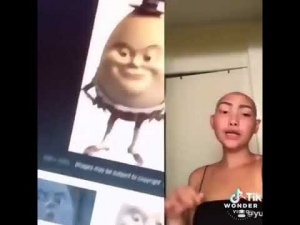TikTok
TikTok is a viral social networking and content creation app that’s been expanding in popularity since its creation in September 2016. The app was made as a platform for individual users to create and release short videos up to 60 seconds in length, allowing users to either share their content with the public or keep the content private, only allowing specific users to see. It has been downloaded over 1.5 billion times and has 500 million active users per month[1] with its most popular user having over 40 million followers. In addition to this, 69% of TikToks users span from ages 16 to 24 years old[2]. The app has always targeted a younger audience in order to grow interest and achieve success. While the TikTok has gained a large amount of success over the past few years it is often criticized for breaching the privacy of its users among other things.
Contents
How it Started
The origin of the app dates back to 2014 with the creation of Musical.ly. Musical.ly was an app created for people to post videos of themselves lip syncing to various songs and share them with an online community. The app grew in notoriety, reaching 60 million active users before it was bought out by a larger corporation. During this time, the app did not have a large international outreach and almost all users were from the United States. However, in 2016 when Musical.ly was acquired by a company called ByteDance, they included more freedom in video creation as opposed to limiting their content to lip syncing videos. After acquiring musical.ly for over $1 billion, ByteDance changed the name of the app to TikTok [3]. While the app is known as TikTok internationally, it goes by the name of Douyin in China, running off of seperate servers due to China’s regulations [4].
History of the Concept
ByteDance
ByteDance is a company based in Beijing, created by Zhang Yiming in 2012[2]. One of its first apps, Toutiao, is among the most popular sites for people to retrieve the news in all of China. Chinese tech companies, such as ByteDance, benefit since they are able to spread their apps throughout China, but also have outreach that spreads across the world. This is in contrast to companies like Google that are banned from use in China. Moreover, being that all of ByteDance’s apps are free for use, the company receives almost all of its revenue from advertising. That being said, ByteDance’s goal for the creation of TikTok was to target a young audience due to the fact that young audiences have a higher capacity for long term use and often create the newest viral trends.
Features
Video Uploading
Users are able to either record and upload videos they took on the app or take videos they made from their own camera roll. Once the video is uploaded it is available to be viewed by the users followers if the account is private, or it can be viewed by anyone who uses the app if the account is public.
Following Page
The following page allows users to view videos posted by other users that they follow as they are released. Instead of having to look up each individual user for new posts all of them are filtered to one location.
For You Page
TikToks algorithm selects a feed of videos based off of what each user likes, watches, and shares. The page is never ending and leaves many users guessing what content they have to make in order to get on the "for you" page [5].
Video editing
Users are able to edit their videos in many different ways including
- Shading
- Lengthening and shortening videos
- Play audio over videos
- Add stickers and animations
- Add special effects that alter the users body, eye color, hair color, etc.
Live streaming
Users can live stream themselves either publicly or keep it limited to their followers.
Social sharing
Users have the capability of sharing their content edited on TikTok to other social media websites such as Instagram and Snapchat.
Soundtracks
The app has a library of songs that users can pick and choose fro to use as audio over their videos
Duet Option
Users have the option to take a video side by side another video so they can both be watched at the same time.
Growth and Success
In less than 4 years the app has obtained 1.5 billion downloads and has achieved an active monthly user base of 500 million. While the app is wide spread across the world with the exception of a few countries it has now started to catch the eye of the mainstream media. On March 10, 2020 one of the apps most famous users with 41.7 million followers, Charli D'Amelio made a live appearance on the hit late night show, "The Tonight Show Starring Jimmy Fallon". The app has now received such a large amount of recognition that its users content is not only being shown on the app, but users are now gaining mass popularity to the point where they are being brought on television for interviews.
The Ethics of TikTok
Ethics of Surveillance
Unbenounced to many of its users, TikTok tracks the audio and browsing data every single one of its users[6]. Not only does this action address unethical means of surveillance, but it also brings into question the transparency of the company and how they're not disclosing the true purpose of what they use this data for. To quote Chaim Gartenberg in his article "Reddit CEO says TikTok is ‘fundamentally parasitic,’" "TikTok parent company ByteDance claims that its fingerprinting techniques are used to identify malicious browser behavior, but Eberl notes his skepticism given that the website still appears to work perfectly fine when those scripts are disabled"[6]. If the website is able to function perfectly even without using fingerprinting and tracking technology, it brings many concerns to what else the company could be doing with the information. Considering that the information is not crucial to the inner workings of the app, it shows a true breach of privacy for all of the community of users connected by the platform. When discussing this, it is important to mention Steve Mann's paper "Veillance and Reciprocal Transparency: Surveillance versus Sousveillance, AR Glass, Lifeglogging, and Wearable Computing" that determines ByteDance’s position is unethical. At the moment, ByteDance is executing a propertarian model of veillance; since the app is their property they are deciding to survey every action that happens on it. However, this is an unethical use of power for the company. To quote Mann "there is no reason to assume that those in high places(e.g. priests, politicians, police, etc.) are flawless and should thus be able to watch over us without us being able to watch back! Otherwise, the one-sided nature of surveillance allows it to, under certain circumstances, become the very “ladder” that facilitates this high-level corruption"[7]. ByteDance is surveying its users with no opportunity for sousveillance. The company is putting itself at a high level of power, compromising the privacy of all people on the app. Being that the company won’t disclose their true reasoning for fingerprinting each user, they are exercising unethical behavior on behalf of the millions of people who interact with the company’s creation.
Cyberbullying
User to User
Much like other popular social media apps and websites being used, TikTok also acts as a hub for cyberbullies through its comment system, however, unlike any other app TikTok also has the duet feature that allows any user to make a video and play it side by side with another video made by a user. In the cases of cyberbullying through comments, People are able to make separate accounts and remain completely anonymous when commenting on any post. In cases where users are bullied from duets there is no way for them to delete the post without filing a complaint with TikTok. While users are able to either disable or delete comments from their post they are unable to prevent duets from being created which gives an open opportunity for cyberbullies. To quote Rachael Krishna in her article "TikTok Creators Say They Are Being Bullied And The Company Isn’t Helping", "When they do report abuse, users find that content either stays up or just keeps coming, meaning they spend more of their time reporting content than creating it"[8]. While the app exercises ethical behavior by allowing users to restrict comments, they fail to stay consistent in upholding their good ethical behavior across the platform by allowing duets to keep getting created with no means to delete it unless TikTok employees are alerted to its presence.
ByteDance to User
Copyright
Celebrity impact
Livestreaming life
class discussion
External Links
References
- ↑ https://99firms.com/blog/tiktok-statistics/#gref
- ↑ 2.0 2.1 https://digiday.com/media/everything-you-need-to-know-about-bytedance-the-company-behind-tiktok/
- ↑ https://www.businessinsider.com/tiktok-app-online-website-video-sharing-2019-7.
- ↑ https://en.wikipedia.org/wiki/TikTok
- ↑ https://www.vice.com/en_us/article/xwezwj/how-does-tiktoks-for-you-page-work-users-have-some-wild-theories
- ↑ 6.0 6.1 https://www.theverge.com/2020/2/27/21155845/reddit-ceo-steve-huffman-tiktok-privacy-concerns-spyware-fingerprinting-tracking-users
- ↑ http://wearcam.org/veillance/part1.pdf
- ↑ https://www.buzzfeednews.com/article/krishrach/tik-tok-users-bullying-abuse-complaints



